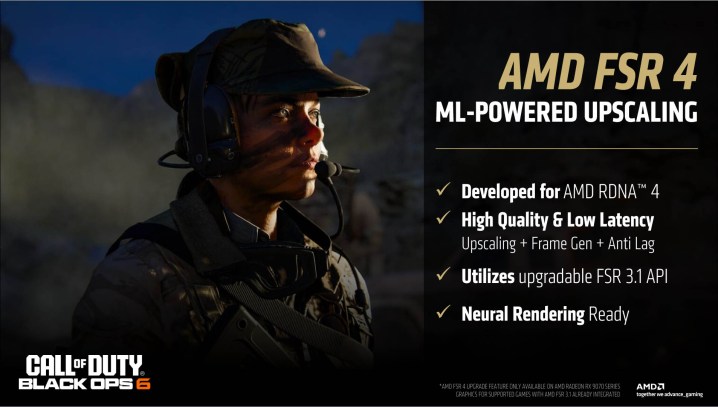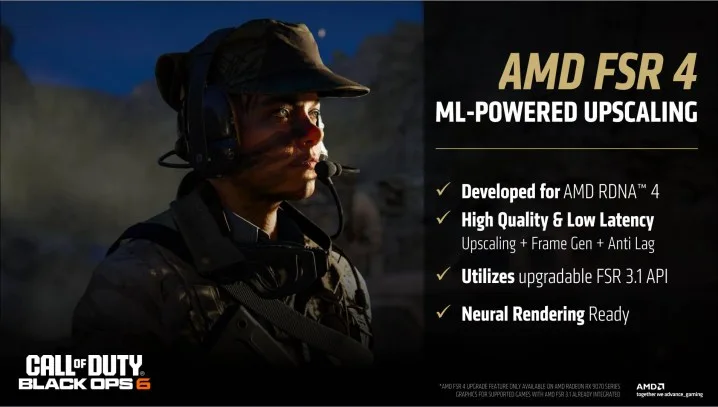AMD has finally unveiled the technical specifications and pricing for its new Radeon RX 9070 series GPUs, based on the RDNA 4 architecture. Following a somewhat lackluster introduction at this year’s Consumer Electronics Show (CES), the company organized a dedicated online event today to delve into architectural insights and innovative features we can expect from the RX 9070 and RX 9070 XT graphics cards.
In conjunction with the launch of the Radeon RX 9000 series, AMD also revealed significant updates to its upscaling and performance enhancement technologies. FidelityFX Super Resolution (FSR) 4 signifies a major transformation in AMD’s strategy regarding image upscaling and frame generation, while HYPR-RX has been fine-tuned to further enhance gaming performance.

FSR 4 diverges from earlier versions by fully utilizing the AI accelerators found in AMD’s RDNA 4 architecture. Unlike FSR 3.1, which depended on conventional spatial upscaling, FSR 4 introduces AI-driven improvements for enhanced image clarity and smoother motion. Initially, this iteration will be exclusive to RDNA 4 GPUs, although there might be some compatibility with RDNA 3 and RDNA 2 in the future, albeit uncertain. AMD has stated that FSR 3.1 will still be available.

A standout feature of FSR 4 is its synergy with frame generation, enabling the AI cores in RX 9000-series GPUs to produce additional frames, akin to Nvidia’s approach with DLSS frame generation. While AMD has yet to reveal whether FSR 4 employs a transformer-based neural network like DLSS 4 or a convolutional neural network (CNN), early comparisons show a distinct enhancement compared to FSR 3.1. The update also claims readiness for neural rendering, indicating potential future developments that may integrate with Microsoft’s Cooperative Vectors.

According to AMD, using FSR 4 with frame generation could yield a performance boost of up to 3.7x. Moreover, FSR 4 will be compatible with current games that utilize FSR 3.1, although the implementation details remain unclear. It may require users to enable it manually through driver settings instead of automatic integration.

At its launch, more than 30 games will support FSR 4, with AMD’s goal of increasing this number to over 75 titles by the end of 2025. As is the case with all frame-generation technologies, real-world performance and responsiveness will vary based on individual game implementations.
HYPR-RX, AMD’s performance enhancement suite that operates with a single click, is also getting significant updates. This feature brings together a variety of performance-boosting technologies, including FSR/RSR, Radeon Anti-Lag, Radeon Boost, and AFMF 2, delivering a comprehensive solution for users aiming to enhance FPS without needing manual adjustments.

An essential part of this update is AFMF 2.1 (AMD Fluid Motion Frames), which introduces refinements to frame generation, reducing ghosting, enhancing fine details, and improving overlay detection. Although HYPR-RX can provide notable performance increases in certain games, the extent of these improvements can vary depending on the specific title and system configuration.
AMD’s introductions of FSR 4 and enhancements to HYPR-RX signify a bold shift towards AI-driven gaming technologies, placing them squarely in competition with Nvidia’s DLSS and Reflex ecosystem. While the initial exclusivity of FSR 4 to RDNA 4 GPUs may constrain its adoption at first, its compatibility with existing FSR-supported titles could incentivize developers to embrace this new standard. Moreover, the updates to HYPR-RX offer an effortless way for casual gamers to optimize their performance with minimal hassle. As these technologies begin to roll out, practical benchmarks will ultimately determine their effectiveness and influence on the gaming industry.






